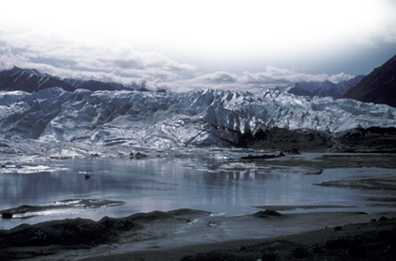
Geotimes Home | AGI Home | Information Services | Geoscience Education | Public Policy | Programs | Publications | Careers

 Glaciers
are the most powerful and efficient erosive agents on the planet — literally
moving mountains and reducing them to rubble, as the ice sculpts and carves the
land. Historically, glaciologists have lacked knowledge about what governs glacial
erosion, hindering their attempts to model the erosive processes. What has been
needed, they say, is a set of rules such as those that govern flow rates, erosion
and deposition in graded rivers and streams. Understanding what controls glacial
erosion may have important implications for understanding glaciated mountain belts
and modeling both ancient and current ice sheets.
Glaciers
are the most powerful and efficient erosive agents on the planet — literally
moving mountains and reducing them to rubble, as the ice sculpts and carves the
land. Historically, glaciologists have lacked knowledge about what governs glacial
erosion, hindering their attempts to model the erosive processes. What has been
needed, they say, is a set of rules such as those that govern flow rates, erosion
and deposition in graded rivers and streams. Understanding what controls glacial
erosion may have important implications for understanding glaciated mountain belts
and modeling both ancient and current ice sheets. |
Geotimes Home | AGI Home | Information Services | Geoscience Education | Public Policy | Programs | Publications | Careers |